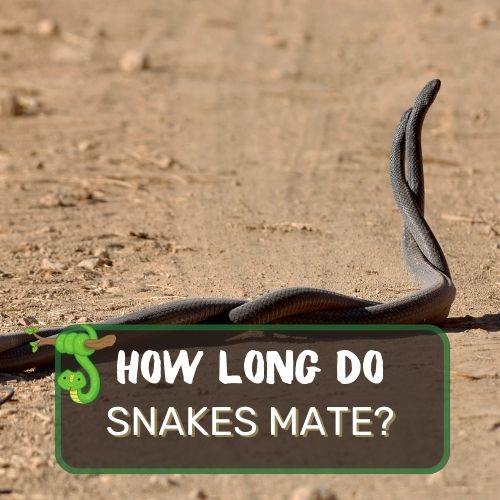
In this article, we delve into the intriguing question, “Do snakes get sad?”
We explore the complex world of snake emotions, examining the behaviors that may hint at their emotional capacity.
By analyzing scientific research and expert opinions, we aim to shed light on whether snakes truly experience sadness or if their behaviors are driven by instinct and survival mechanisms.
Join us as we uncover the unique aspects of snake behavior, discussing the potential factors influencing their emotions, and offering insights into responsible snake ownership.
Whether you are a snake enthusiast or simply curious about the emotional lives of these enigmatic creatures, this article provides a captivating exploration of the topic.
Table of Contents
- 1 The Answer To Do Snakes get sad?
- 2 Understanding Snake Emotions
- 3 Can Snakes Experience Sadness?
- 4 Signs of Negative Like Emotions in Snakes
- 5 The Potential for Snake Depression
- 6 Lethargy and Inactivity in Snakes
- 7 Factors Influencing Snake Emotions
- 8 The Role of Enrichment for Snakes
- 9 Ethical Considerations for Snake Owners
- 10 FAQ
- 11 Conclusion
The Answer To Do Snakes get sad?
There is no conclusive evidence to suggest that snakes experience emotions like sadness in the same way humans do. While snakes may exhibit behaviors that could be mistaken for sadness, such as inactivity or reduced appetite, these behaviors are more likely to be instinctual responses to their environment rather than emotional experiences.
Snakes’ emotional capacity is still a subject of ongoing research and debate in the scientific community. It is essential to approach the topic with caution and rely on observable behaviors and scientific evidence.
Understanding Snake Emotions

The emotional capacity of snakes
When we think of emotions, we often associate them with warm-blooded creatures like humans and mammals. However, the emotional world isn’t limited to just us. Snakes, being cold-blooded reptiles, also exhibit intriguing emotional behaviors.
While their emotional capacity might differ from ours, it’s essential to explore how they express themselves.
Snakes display various emotions through their behavior and responses to the environment. For instance, when feeling threatened, they might adopt defensive postures, hiss, or even strike as a means of self-defense.
On the other hand, during moments of comfort and contentment, they exhibit more relaxed and at ease behaviors.
Observing these responses, scientists believe that snakes possess a certain level of emotional intelligence, allowing them to adapt to their surroundings.
Snake emotions vs. human emotions
While it’s challenging to draw a direct parallel between snake emotions and human emotions, certain similarities exist. Fear, for instance, is an emotion both snakes and humans experience, albeit in different contexts.
Snakes’ fear response helps them survive in the wild, while human fear can manifest in various situations, such as facing phobias or dangers.
Likewise, contentment and a sense of security can be observed in both snakes and humans. When snakes find themselves in safe environments with sufficient food and shelter, they display behaviors indicating relaxation and satisfaction.
Similarly, humans feel contentment and happiness in comfortable and nurturing surroundings.
Understanding these emotional expressions in snakes adds depth to our comprehension of the natural world and the varied ways life forms interact with their surroundings.
Can Snakes Experience Sadness?

Studies and research on snakes and sadness
The question of whether snakes can experience sadness has intrigued scientists and researchers for years.
While emotions like fear and contentment seem evident, sadness is a more complex emotion to gauge in reptiles. Nevertheless, studies have attempted to shed light on this enigmatic aspect of snake behavior.
Researchers have conducted experiments to observe snakes’ responses to certain stimuli and changes in their environment.
They observed behavioral changes, such as reduced movement and loss of appetite, in snakes separated from their preferred habitats or kept in captivity.
These observations led to speculations that these responses could indicate some form of emotional distress, possibly akin to sadness.
The differing opinions and findings
However, it’s crucial to exercise caution when interpreting these findings. Some experts argue that what might appear as sadness could be a natural response to stress or discomfort without necessarily involving emotions as humans perceive them.
Snakes, being cold-blooded, rely heavily on environmental cues to regulate their behavior and physiology.
The lack of a clear understanding of snake cognitive abilities and emotional processing complicates the matter. As a result, opinions on whether snakes genuinely experience sadness diverge among experts in the field.
Signs of Negative Like Emotions in Snakes

Behaviors that may be mistaken for sadness in snakes
When observing snakes, it’s essential to avoid anthropomorphizing their behavior, which means attributing human emotions to them. Several behaviors that might be mistaken for sadness actually serve other purposes in the snake world.
For example, reduced activity levels could be due to temperature regulation or preparation for shedding their skin rather than an emotional state.
Another behavior that might be misinterpreted is the refusal to eat. While it’s true that snakes can lose their appetite during periods of stress or illness, this is a survival mechanism rather than a clear sign of sadness.
Snakes might skip meals if they feel threatened or are undergoing changes in their surroundings.
How snakes might communicate their emotions
Snakes, lacking facial expressions or vocalizations, communicate their emotions primarily through body language. Understanding these cues is essential to interpreting their emotional states more accurately.
For instance, defensive postures, such as coiling tightly with their head drawn back, indicate fear or feeling threatened. On the other hand, relaxed and stretched-out postures suggest a sense of safety and contentment.
Hissing, rattling, and puffing up are all communication methods used by snakes to express discomfort or ward off potential threats.
Being attentive to these behaviors and their context helps us better grasp the emotional aspects of snake behavior without imposing human emotions upon them.
The Potential for Snake Depression

The study that suggests snakes can get depressed
In recent years, a groundbreaking study conducted by a team of herpetologists and animal behaviorists has sparked fresh debates about the possibility of snakes experiencing depression.
The study focused on captive snakes, aiming to explore the emotional impact of prolonged confinement and limited stimuli.
To assess snake emotional states, the researchers closely monitored a group of snakes kept in controlled environments.
They documented behavioral changes, including reduced activity, altered feeding patterns, and decreased interactions with their surroundings.
Discussion of the methodology and findings of the study
The study incorporated several methodologies, including video monitoring, behavioral assessments, and hormone level measurements.
By comparing the captive snakes’ behavior with those in more enriched environments, the researchers aimed to identify signs of emotional distress.
The findings were thought-provoking. The captive snakes, despite being provided with the necessary care, exhibited prolonged periods of inactivity and decreased interest in their surroundings.
These behaviors, consistent with what might be interpreted as depression, raised intriguing questions about the emotional implications of captivity for these creatures.
However, the study also faced criticism from some experts who pointed out that the observed behaviors could be attributed to the stress of captivity rather than genuine emotional experiences.
They argued that the changes observed might be mere adaptations to their confined environment, as snakes are naturally solitary and inactive creatures in the wild.
The debate continues, urging the scientific community to delve deeper into the intricacies of snake cognition and emotions.
As research techniques evolve and our understanding of animal psychology advances, we may gain more clarity on this intriguing subject.
Lethargy and Inactivity in Snakes

Why snakes may appear sad due to lethargy
Lethargy is one of the behaviors that can be mistaken for sadness in snakes. When a snake appears lethargic, with reduced movement and minimal activity, it might trigger concern about its emotional well-being.
However, it’s crucial to differentiate between sadness and normal periods of rest in snakes.
In the wild, snakes are energy-efficient creatures. They conserve energy by remaining inactive for extended periods, especially after a meal or during unfavorable environmental conditions.
This behavior ensures their survival during times of scarcity and allows them to remain camouflaged and inconspicuous to avoid predators.
Factors that can contribute to a snake’s inactivity
Several factors can influence a snake’s inactivity, which may be mistakenly perceived as sadness. Temperature plays a significant role; snakes are ectothermic, meaning their body temperature is regulated by their environment.
Cooler temperatures can slow down their metabolism, leading to reduced activity levels.
Additionally, snakes are sensitive to changes in their surroundings, such as new environments or disruptions to their habitats. These changes can induce stress, prompting them to adopt a defensive, inactive state.
It’s essential to observe these behaviors within the context of a snake’s natural habitat and consider their unique physiology before interpreting them as indicators of sadness.
Factors Influencing Snake Emotions

Environmental factors that can affect a snake’s mood
Snakes are highly attuned to their surroundings, and their emotions can be influenced by various environmental factors. In the wild, they rely on specific cues to gauge their safety and comfort.
Changes in temperature, humidity, and availability of food and shelter can impact their emotional state.
Snakes are solitary creatures, and encounters with other snakes can evoke feelings of competition, stress, or territoriality. Similarly, interactions with potential predators or human disturbances can induce fear or anxiety.
In captivity, providing a stimulating and enriching environment is crucial to promoting positive emotional well-being.
Properly designed enclosures with hiding spots, climbing opportunities, and appropriate temperature gradients can help reduce stress and promote more natural behaviors.
How captivity and neglect may impact snake emotions
Captivity can significantly influence a snake’s emotions, particularly if their needs are not adequately met.
Confinement in small or unsuitable enclosures can lead to stress and frustration, resulting in negative emotional responses.
Lack of mental stimulation and opportunities for exploration can also contribute to a diminished emotional state.
Similarly, neglect and improper care can have severe consequences for captive snakes. Inadequate feeding schedules, unclean environments, and improper temperature regulation can lead to physical and emotional distress.
Snakes kept as pets require responsible ownership, with a focus on meeting their specific needs to ensure their emotional well-being.
The Role of Enrichment for Snakes
The importance of providing stimulation and enrichment for pet snakes
For pet snake owners, understanding the significance of enrichment is vital in ensuring their pets’ emotional well-being.
In captivity, snakes lack the variety of stimuli present in their natural habitats, which can lead to boredom and emotional stagnation.
Enrichment activities aim to replicate some aspects of their wild environment, providing mental and physical stimulation.
How enrichment can positively impact snake emotions
Enrichment can have a profound effect on a pet snake’s emotions. Offering various hiding spots, climbing opportunities, and objects to interact with can promote natural behaviors and prevent boredom-induced stress.
Additionally, providing a diverse diet and adjusting feeding techniques, such as offering food in a more interactive manner, can engage a snake’s hunting instincts and keep them mentally active.
By engaging in these enriching activities, pet snakes can lead more fulfilling lives, exhibiting behaviors that align with their instincts and natural inclinations.
Ethical Considerations for Snake Owners

The responsibilities of snake owners in ensuring their pets’ well-being
Owning a pet snake comes with significant responsibilities, primarily centered around providing proper care and promoting their emotional well-being.
Understanding their specific needs is crucial to ensure they thrive in captivity.
Snake owners must create an environment that closely mimics the snake’s natural habitat.
This includes providing suitable temperature gradients, appropriate humidity levels, and ample hiding spots to reduce stress and promote a sense of security.
Regular health check-ups with a qualified reptile veterinarian are essential to ensure the snake’s physical health.
Monitoring their behavior and seeking prompt medical attention for any unusual signs is vital in addressing potential health issues.
How to create a suitable environment for a pet snake
To create an ideal environment for a pet snake, owners should research the specific species they have and understand its natural behaviors.
This knowledge helps design an enclosure that accommodates the snake’s size, activity level, and natural habits.
Providing various hiding spots using artificial caves or foliage allows the snake to feel secure and avoid unnecessary stress.
Climbing opportunities, such as branches or shelves, can be added for snakes that are arboreal or semi-arboreal, encouraging them to explore and exercise.
Maintaining proper temperature and humidity levels is essential to support the snake’s physiological functions and overall health.
Ensuring a suitable diet and feeding schedule is also critical to meet their nutritional needs.
FAQ
Do snakes have emotional feelings?
The emotional capacity of snakes is still a subject of ongoing research and debate among experts. While they do exhibit behaviors that might hint at emotions, attributing human-like feelings to them requires caution. Snakes’ behaviors are primarily driven by instinct and responses to their environment, and their emotions might be quite different from those experienced by humans.
Do snakes get lonely?
Snakes are solitary creatures by nature, and in the wild, they typically lead independent lives without forming social bonds. While they may not experience loneliness in the same way humans do, they can feel stressed or uncomfortable if kept in inadequate or solitary conditions for extended periods.
What moods do snakes have?
Snakes can experience a range of moods, primarily influenced by their environment and physiological needs. They may display behaviors associated with fear, contentment, curiosity, or defensiveness. Understanding their body language and responses can provide valuable insights into their current mood and emotional state.
Can snakes bond with humans?
The concept of bonding, as seen in mammals, might not be applicable to snakes. However, some pet snakes can become familiar with their owners and show signs of recognizing them through consistent handling and positive interactions. While not exactly a traditional bond, this recognition can be seen as a form of familiarity and trust.
How can you tell if a snake is happy?
Determining a snake’s emotions, including happiness, can be challenging due to their unique behaviors and lack of facial expressions. A content snake might exhibit relaxed and stretched-out postures, healthy feeding patterns, and active exploration of its environment. However, interpreting emotions in snakes remains speculative and requires further research.
Are snakes scared of humans?
Snakes, as a defense mechanism, may display fear or defensive behaviors when they feel threatened by humans. However, not all snakes react the same way to human presence. Some species are more docile and less prone to defensive responses, while others might be more reactive. It’s essential to treat all snakes with respect and caution to ensure both their safety and ours.
Conclusion
In this comprehensive exploration of snake emotions and behaviors, we’ve delved into the intriguing world of these enigmatic reptiles.
While it’s essential to avoid anthropomorphizing snakes, their unique behaviors and responses to the environment provide valuable insights into their emotional lives.
We’ve learned that snakes do exhibit various behaviors that may suggest the presence of emotions, such as fear, contentment, and defensiveness.
However, interpreting these behaviors requires an understanding of their natural instincts and their environment.
As snake owners, providing proper care and creating enriched environments for our scaly companions is crucial.
Enrichment activities, such as providing hiding spots and climbing opportunities, can promote more natural behaviors and reduce stress in captive snakes.
Additionally, responsible ownership involves understanding the specific needs of our pet snakes and addressing their physical and emotional well-being.
Regular veterinary check-ups, proper feeding, and maintaining suitable environments are essential aspects of ensuring their health and happiness.
While snakes might not experience emotions in the same way as humans, respecting and appreciating their unique characteristics enriches our understanding of the diverse animal kingdom. As we continue to study and care for these fascinating creatures, we deepen our connection to the natural world and the rich tapestry of life that surrounds us.




0 Comments